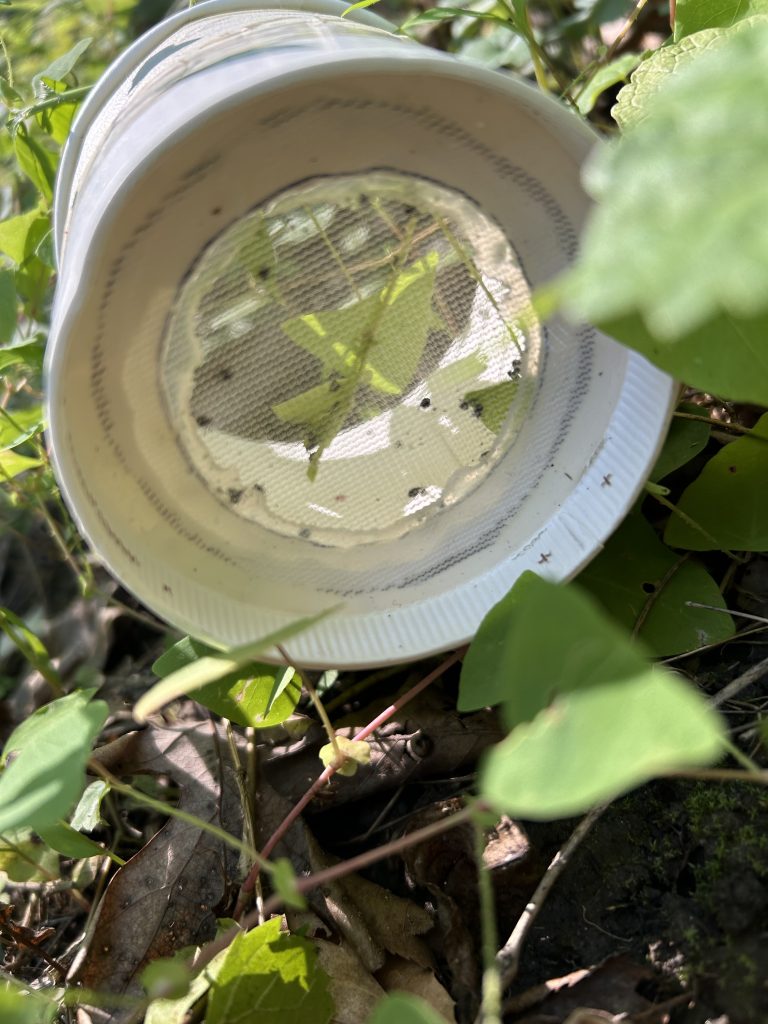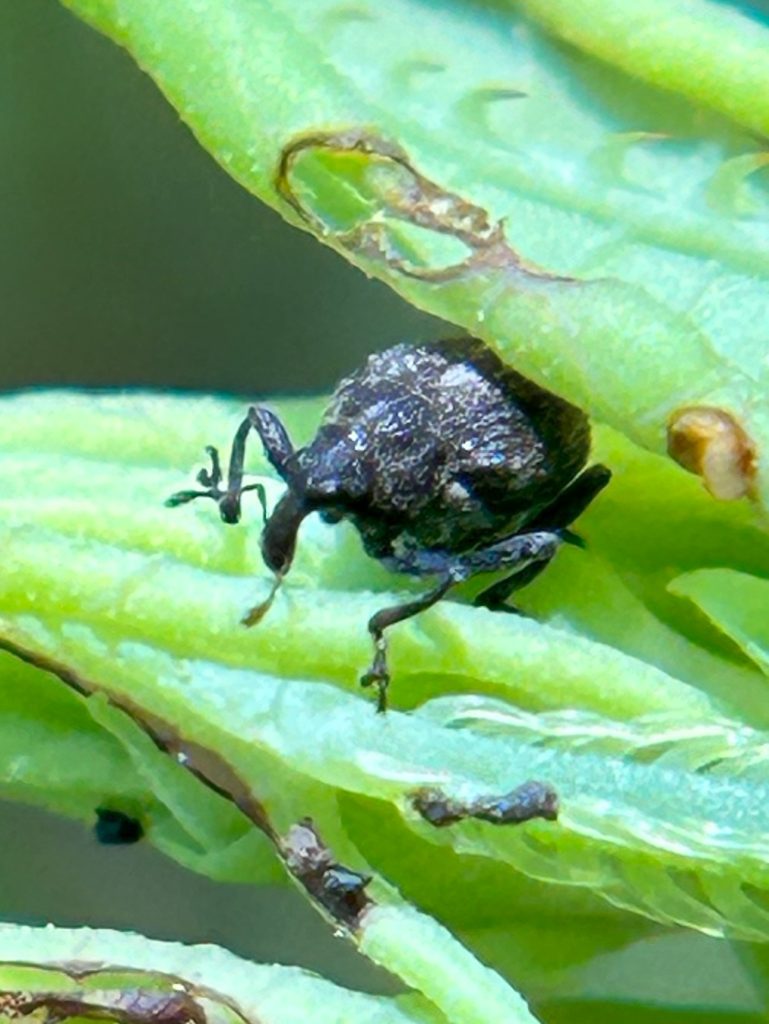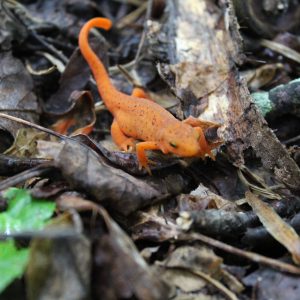Weevils by the Mile-a-Minute
The Preserve Introduces a Biological Control
There are many invasive plants that the preserve team actively manages to maintain the native plant communities. This is done by mainly mechanical means, with the occasional spot treatment of herbicide. But to tackle the growing threat of the Mile-a-Minute vine, Persicaria perfoliate, a plant that can grow up to 6 inches a day, the team eagerly welcomed a new ally.
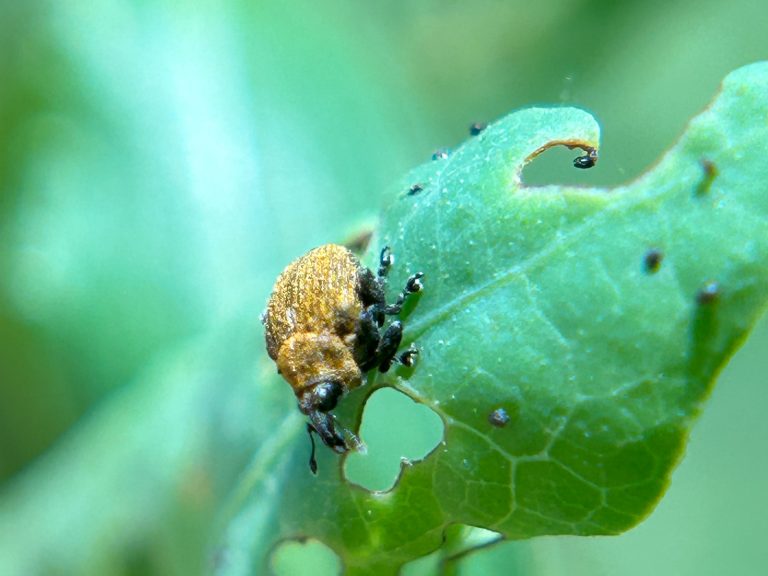
The Virginia Department of Forestry’s Lindsay Caplan provided the preserve’s support against the swift-growing Mile-a-Minute (MaM) in the form of an army of tiny insects. The speck-like weevil, Rhinoncomimus latipes, feeds exclusively on this invasive plant.
This May, 1,000 individuals were released in two areas on the south section of the Bull Run Mountains Natural Area Preserve, where the MaM is established and outcompetes native plants. At a dollar a weevil, this was a grand’s worth of weevils put towards a long-term solution to the invasive plant problem. In the field, it looked like shaking ground pepper onto the invasive vine.
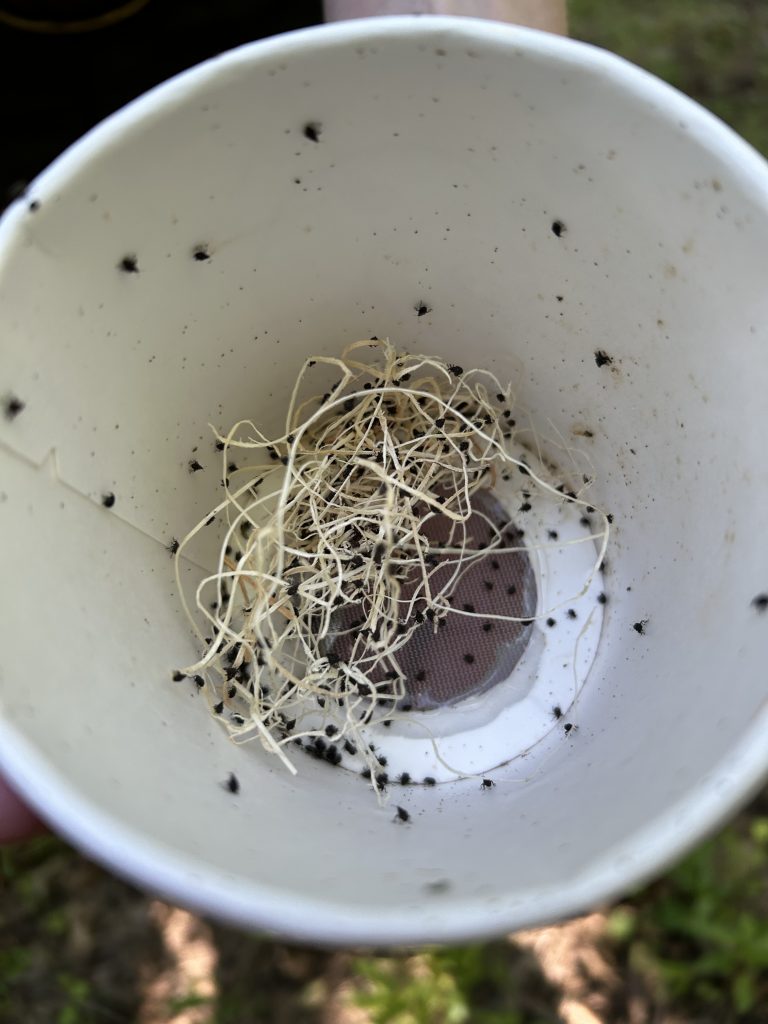
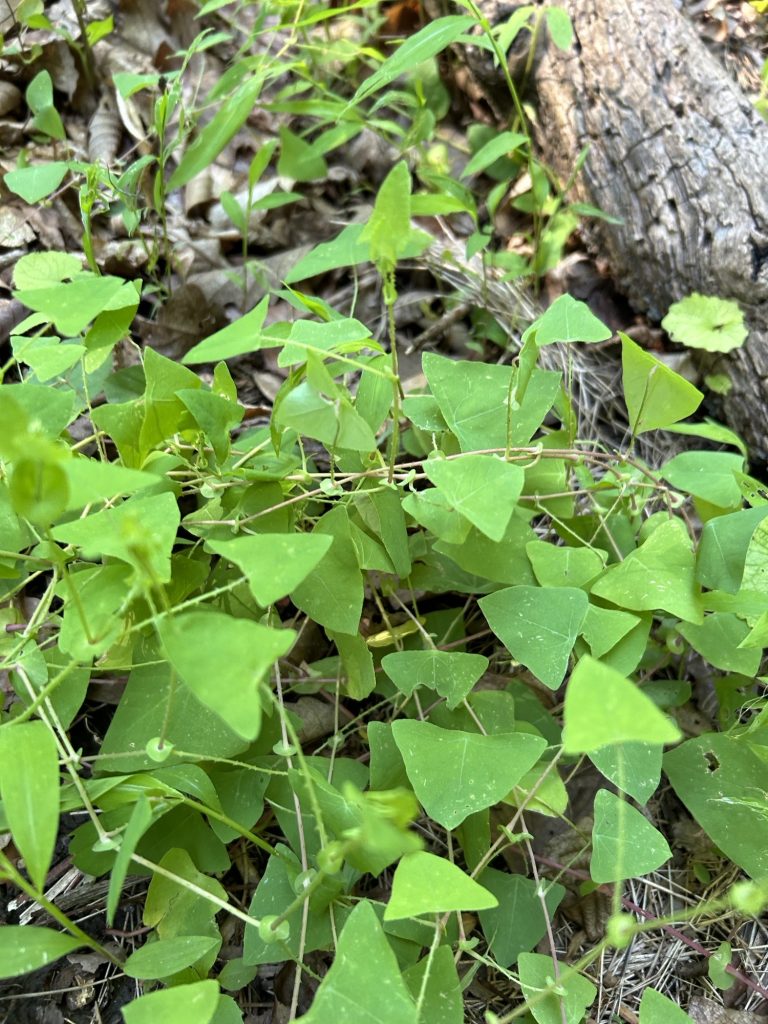
Both adults and larva feed on the plant. A female can lay about 180 eggs after mating. When the weevil larvae hatch, they burrow into the stem to feed on the plant from the inside for about 3 weeks until they emerge and drop to the ground to pupate; the grown-ups munch on the leaves and flower heads. This way, they interrupt the plant’s internal transportation systems, killing off new growths and defoliating the rest of the vine. These weevils can live up to a year and die off with the coming of the frost, with the juveniles staying in their pupas underground until the spring weather.
If these two populations of weevils establish themselves, they’ll be back year after year to pupate and chomp on the MaM, restricting its ability to threaten native plants.
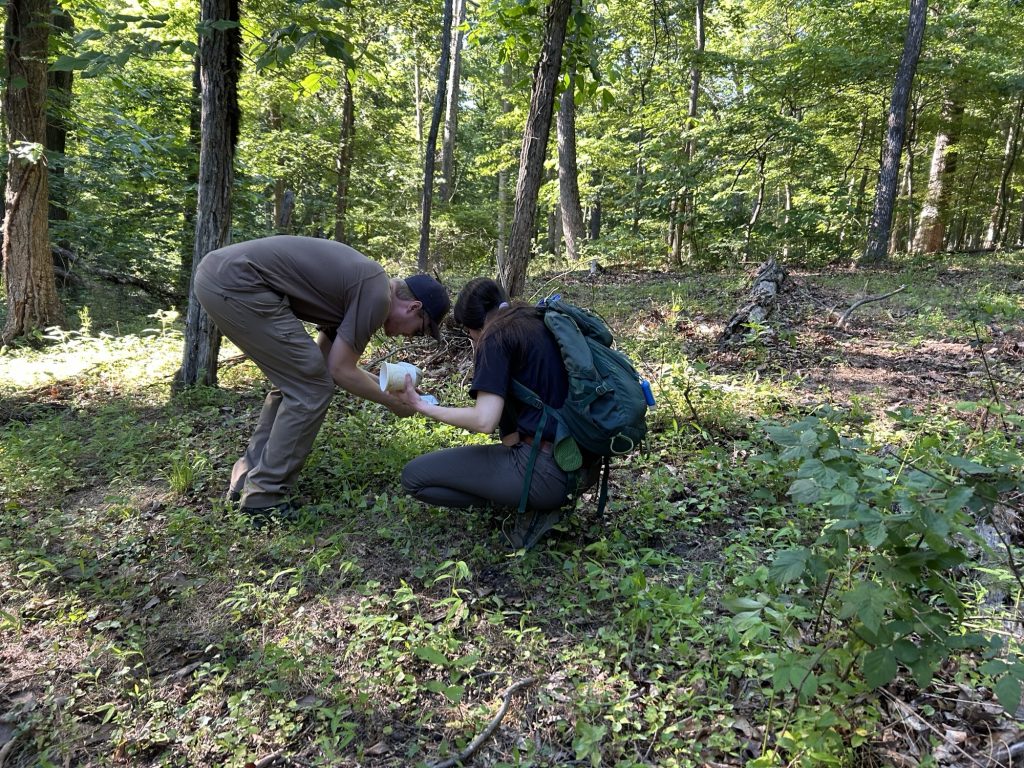
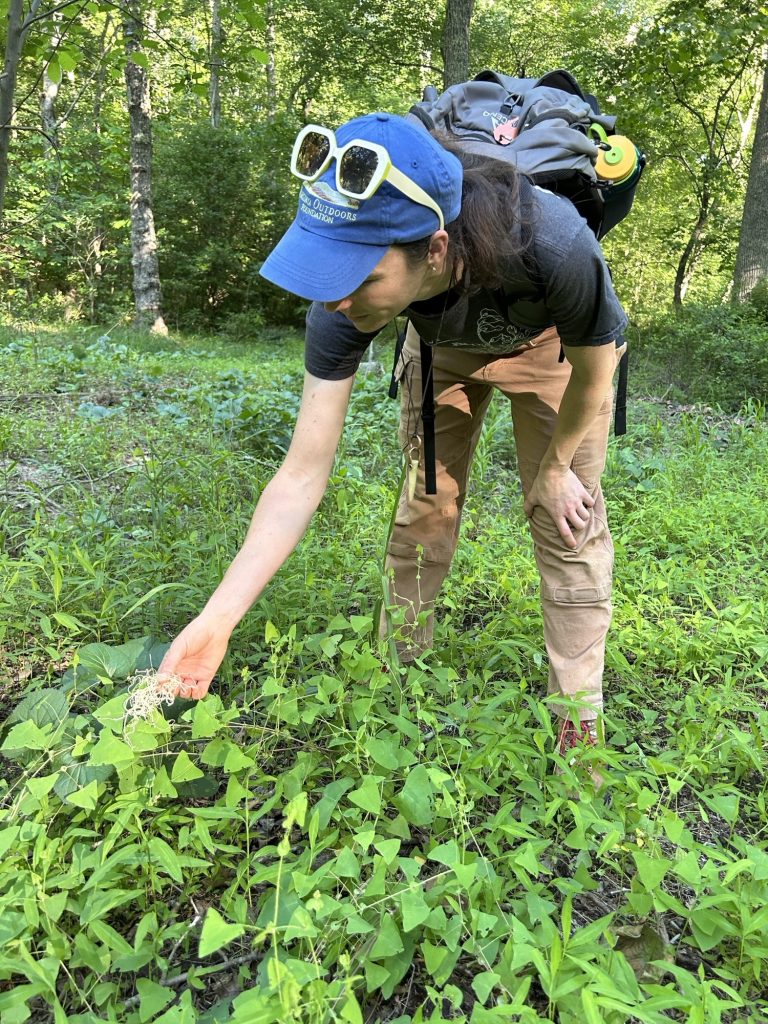
These weevils are originally from east Asia, in China and Japan, the same place where the MaM is native. As a part of a breeding program with the New Jersey Department of Agriculture, this weevil species was studied in quarantine since the early 2000s to ensure they wouldn’t target our native plants. Because this weevil is such a specialist, they have been used as a biological control since 2004, establishing where they were released as a control method and mitigating the MaM spread.
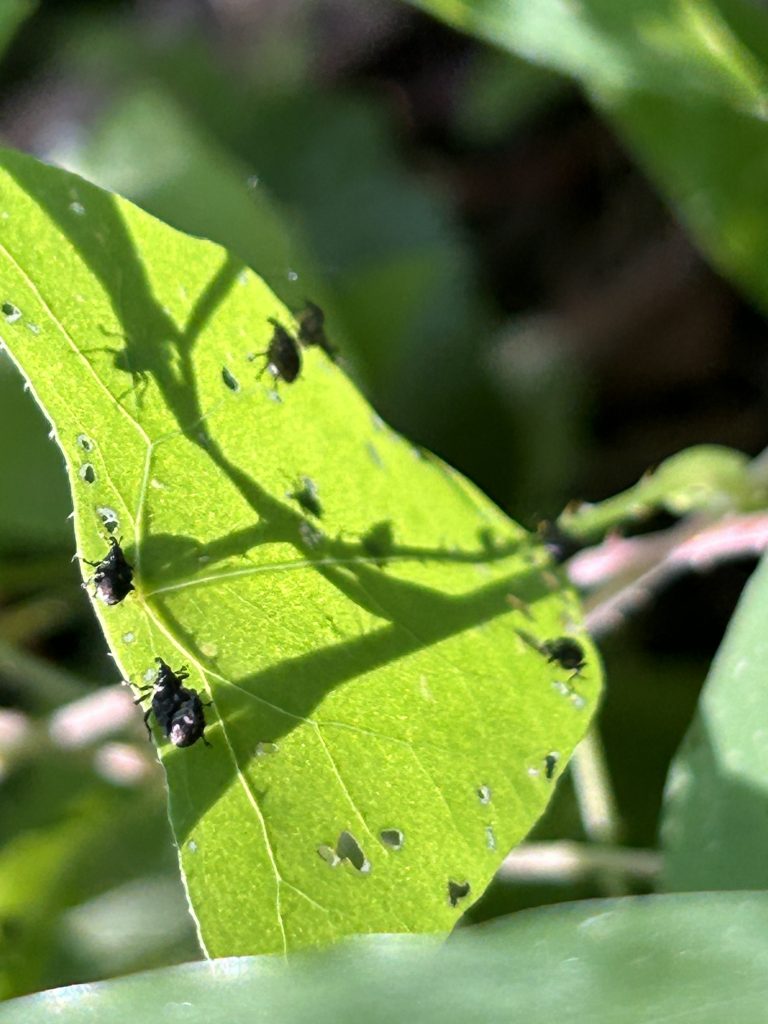
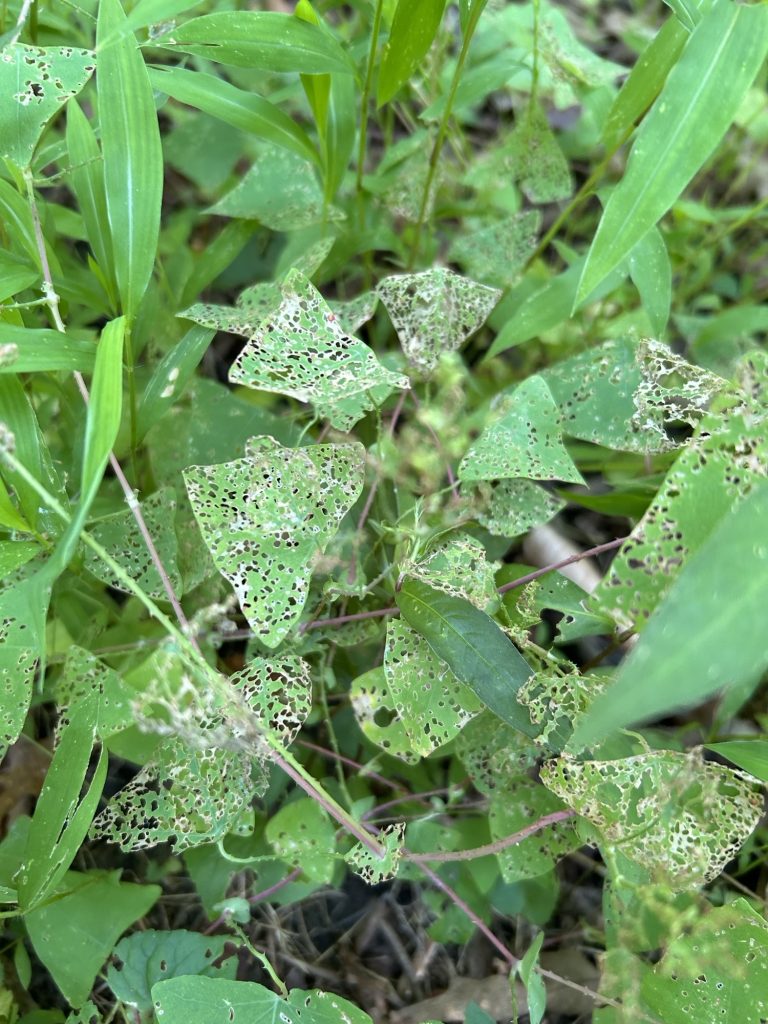
By adding a species-specific biological control to the preserve’s management of invasive plants, the project becomes more effective and better for the environment overall, according to the principles of Integrated Pest Management (IPM).
Speaking as a conservation assistant who is up to her arms in managing invasive plants, I am cheering on these little insects, which would be unremarkable in every other sense. I will be watching this entire summer to see how well they beat back the MaM vine in the Bull Run Mountains.
